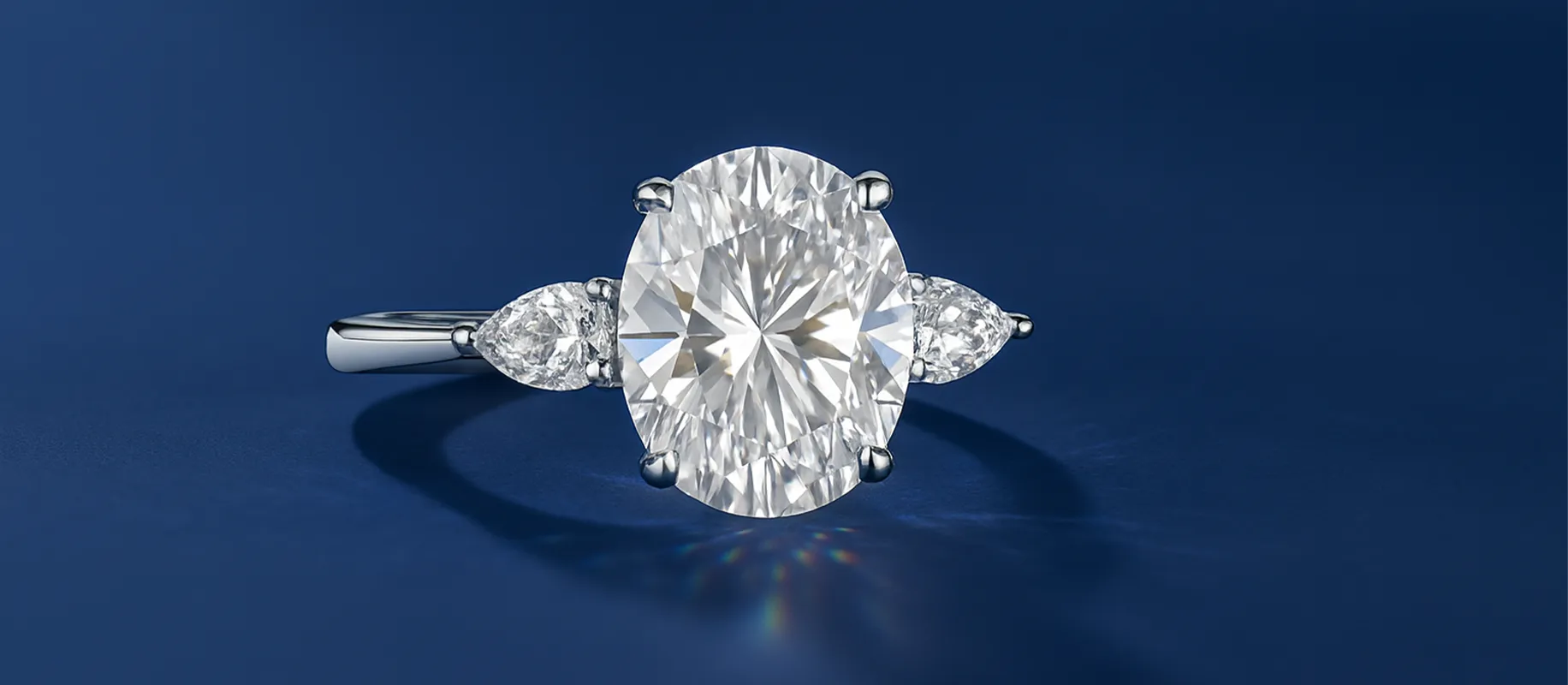Composition
White gold is created by blending pure gold (typically 14k or 18k) with white metals such as palladium or silver. This alloy transforms naturally yellow gold into a bright white metal suitable for fine jewelry. The result is a beautiful, durable material that offers both strength and elegance.
Platinum, on the other hand, is a naturally white metal with a very high purity level—typically around 95%—and minimal additives. Its rarity and density make it especially valued in high-end jewelry.
Color
White gold owes its brilliant, reflective finish to a thin rhodium plating that enhances its brightness and clarity. This luminous look is a key reason why many choose white gold for engagement rings and elegant pieces.
Platinum, with its naturally white appearance, has a subtle grayish tone considered refined and timeless. It maintains its color permanently without needing plating, though over time it develops a soft matte “patina” finish.
Durability
Both metals are highly durable but wear differently. Platinum doesn’t lose material when scratched—it simply displaces, forming the characteristic patina over time.
White gold, while slightly harder on the surface, resists everyday knocks and scratches effectively, maintaining its shape and structure. Although its rhodium plating needs occasional renewal, the core metal remains strong and reliable.
Weight
Platinum is significantly denser and therefore heavier than white gold. A platinum ring will feel noticeably heavier compared to the same design in white gold. This impacts both the wearer’s experience and the cost, as more material is required to craft the piece.
Cost
Platinum is more expensive due to its purity, density, rarity, and the specialized tools needed to work with it.
White gold is more affordable, easier to craft, and delivers a luxurious look at a lower price point, making it an excellent value-for-money choice.
Hypoallergenic Properties
Both metals are generally safe for sensitive skin. Platinum is naturally hypoallergenic due to its purity.
At our workshop, the white gold we use is nickel-free, ensuring maximum safety and comfort for even the most sensitive skin types.
Care & Maintenance
White gold requires some routine maintenance—primarily re-plating with rhodium to preserve its bright finish. It’s best to remove it during household chores or when using harsh chemicals.
Platinum requires less frequent care but does develop a natural patina over time. Those who prefer a glossy look can have it professionally polished, while others embrace its evolving character.
Why White Gold is the Preferred Choice
Both white gold and platinum are excellent options for fine, timeless jewelry. However, when considering everyday practicality, ease of maintenance, comfort, and value for money, white gold stands out as the most balanced and cost-effective choice.
It offers the same brilliant white appearance as platinum, with less weight, lower cost, and greater design flexibility. It’s elegant, comfortable, and adapts beautifully to all styles—from engagement rings to everyday luxury.
For most people seeking a beautiful, durable, and affordable fine jewelry piece, white gold is the smart and stylish choice.
